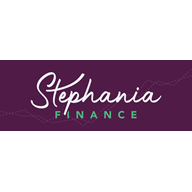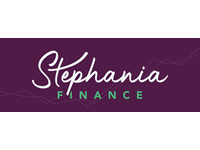I want to know everything about borrowing & saving!I want to know everything about borrowing & saving!
Do you want to make a certain purchase or expense, but you don't have the money at the moment? Then you can choose to borrow money or save the necessary amount. But what is sensible when?
Save up
There is probably no safer way to grow your wealth than saving. Skeptics will immediately answer: "and a slower one neither!". Correct. The return on savings accounts is in many cases lower than the return on investments.
But on the other hand, someone who has put his money in a savings account knows exactly what he has built up in deposits and interest after a number of years. Something an investor can only dream of.
Banking institutions and nowadays insurance companies have developed many different savings products, all with the most fanciful names, so that you no longer see the wood for the trees. Don't worry: Stephania Finance creates clarity.
What is the best choice for you?
The best form of financing actually depends entirely on the purpose of the loan.
Loan Forms
Note: Loaning money costs you money!
- Do you need the full amount at once, or do you want to withdraw amounts when you need them
- Do you opt for a fixed term, or do you want to have continuous access to money?
- Do you want low monthly payments, or do you want to pay off in a short period
- do you go for the certainty of a guaranteed repayment
We have listed the most common types of loans below. The two most popular loan forms are the Personal Loan and the Revolving Credit.
You want to buy something - a surfboard, furniture, a car or a mobile home - and you don't have enough money at the time. Then you simply borrow the required amount. You then pay it back in equal monthly installments, until you have paid everything back.
A personal loan is a form of saving afterwards. You put aside a fixed amount every month. Only you can enjoy your investment right now. It doesn't matter what it is, a car, a boat or a renovation. You buy it now and you save the amount together with your personal loan.
The interest you pay for the personal loan is added to the loan amount and the total amount is divided by the number of months that the credit runs. This is how the monthly term is determined.
With a personal loan, it is best to match the term to the expected life of what you want to purchase. This prevents you from still paying off while what you have borrowed for has already worn out.
Advantages
- Term and interest are determined in advance
- You borrow at a fixed interest rate
- So you don't have to worry about rising interest rates
- You pay off in fixed, monthly installments
- So you will never be faced with higher costs
- In the event of death before the seventieth year, the outstanding balance can be waived up to a certain maximum
- The amount is automatically debited from your checking account
- Full or partial repayment without penalty
- Periodic clear account overview
Disadvantages
- You cannot withdraw what you have paid off
- Some credit institutions may charge a penalty for early repayment in one go
- You borrow at a fixed interest rate. So you don't benefit from a falling interest rate
- As a rule, the interest is not a tax deductible item
More Certainty
- The moment you take out a loan, the existing situation is assumed.
- To prevent you from getting into financial problems if your income is lost due to illness or disability, you can consider supplementary insurance.
You can consider a revolving credit as a financial reserve that is constantly at your disposal. Income and expenses rarely go hand in hand. For this reason, the revolving credit loan form has been developed.
When taking out a revolving credit, you agree on a maximum credit limit and the monthly payment. You decide when and how much you withdraw from the credit limit.
With a revolving credit you can withdraw the money that you have repaid. So you always have money on hand. Repayment is always penalty-free.
A revolving credit is often taken out to spread regularly recurring expenses over a long period. Just think of the taxes that have to be paid every year.
Advantages
- You can withdraw what you pay off
- You borrow at a variable interest rate
- In the event of death before the seventieth year, the outstanding balance can be waived up to a certain maximum
- The amount is automatically debited from your checking account
- Full or partial repayment without penalty
- The duration is not fixed. After all, you can always withdraw what has been redeemed
- You only pay interest on the amount withdrawn
- You will periodically receive a complete overview. This way you always know how much you can withdraw
Disadvantages
- You borrow at a variable interest rate; if the market interest rate rises, you will therefore pay (substantially) more.
- The interest is not a tax deductible item
More Certainty
The moment you take out a loan, the existing situation is assumed.
You can take out additional insurance to prevent you from getting into financial problems if your income is lost due to illness or disability.
With a credit card you can pay in certain shops, hotels, restaurants, etc., also abroad. You can pay with it until a certain limit is reached (for example € 2000). The amounts will be debited from your account within a few weeks.
Sometimes credit card companies offer the option to pay the bill in installments. Due to a higher interest rate, you are usually more expensive than with a loan from a bank. Furthermore, you usually pay an annual amount for owning the credit card.
It is increasingly possible to lease items. You then pay a fixed amount per week or per month for a number of years. There are two types of leasing: financial leasing and operating leasing.
Financial leasing is very similar to hire-purchase and is possible for, for example, kitchens, parquet, gardens, etc. Usually provisions about maintenance, warranty, etc. are included in the lease agreement
In many cases, a purchase option can be used at the end of the lease period for a symbolic amount.
At the end of the contract, you are not the owner of the item with operational leasing. If necessary, the item can be purchased.
Before concluding a lease, it is advisable to make a comparison with a personal loan or a revolving credit. Include the interest that you have to pay and all other conditions of the various forms of financing.
If you have a credit linked to the payment account at the bank, you may be overdrawn on your payment account up to an agreed amount (the limit). With an agreed
With an authorized overdraft you pay a lower interest than with an unauthorized overdraft. The amount of the limit often depends on the amount that comes into the account each month. For example, the limit can be the amount of the monthly salary. The overdraft must usually be cleared within three months. Particularly when it comes to short-term deficits, it is useful to finance these via the current account. The interest rate is usually between that of a revolving credit and that of a personal loan.
 Stephania Finance.
Stephania Finance.
